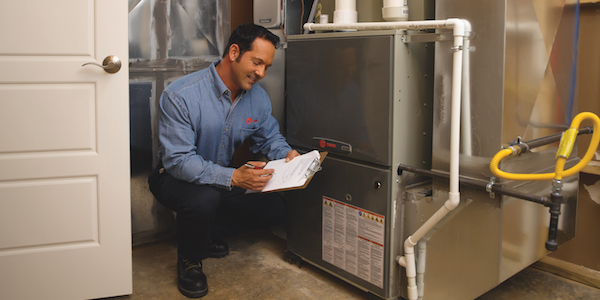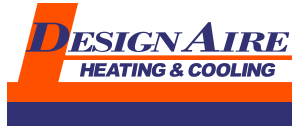
There’s nothing quite like staying inside on a cold winter day in a warm, cozy house. However, if you’ve found your heater isn’t running like it should, then it’s important to figure out if it’s a quick fix or if a technician needs to step in and help.
One of the most common issues many people experience is having a heater suddenly start blowing cold air, not warm air like they wanted. Take a look below for some steps to take to troubleshoot why your furnace won’t blow warm air.
How to Troubleshoot a Furnace That Blows Cold Air
Step 1: Check if thermostat fan is set to “on”
First, inspect your thermostat to make sure the settings are correct. You may find that the fan is set to “on” and may cause the heater to blow without heat. This is common in the transition from summer or fall to winter when the temperatures suddenly drop, so take this step first to make sure you’re doing everything you can to diagnose your furnace problem.
Try switching the thermostat to “auto” to ensure the fan only run when the heat is on. Otherwise, you may find cooler air coming from the vents when you don’t want it!
Step 2: Check if the pilot light is out
Next, check your pilot light to make sure it is on. If it has gone out for some reason, such as a draft in the room blowing it out, and you know how to light it again yourself, then re-light the pilot light safely following your owner’s manual guidelines. Your local utility company or an experienced HVAC technician can also help you light the pilot light in a safe way.
However, if you have tried this and the pilot light continues to go out, you may need system maintenance to ensure your pilot light stays lit and your furnace starts to blow warm air. An HVAC technician can provide service and inspect the system for any other common problems associated with the pilot light going out, such as a problem with the thermocouple which is supposed to keep the pilot light lit.
Step 3: Check if your duct system has major problems
[content] When was the last time you had your ductwork inspected? If you have large holes or leaks in your air ducts, cold air might be getting into your ducts and causing the vents to blow cold air. Alternatively, your warm air could also be escaping from these holes, causing your system to work less efficiently. Only an experienced technician can identify these problems and determine whether the cause of your problem.Step 4: Check the condition of your air filter
Air flows through your filter and then into your ductwork and vents, but if the filters are clogged, dirty, or in poor condition, the airflow might be limited and lead to your furnace overheating. Checking your air filters is integral to diagnosing a heating problem like this, and you can do it yourself pretty quickly!
Step 5: Check if the flame sensor is dirty
Some newer systems rely on a pilotless ignition to heat the furnace and, ultimately, your home. However, the flame sensor can get dirty over time, causing the furnace to blow cold, not warm, air. If you’re not comfortable with cleaning the furnace’s components, an experienced HVAC technician can do it for you during your maintenance appointment or to inspect your furnace for problems.
Step 6: Check if the condensate drain line is clogged
In order to keep the moisture out of newer, high efficiency furnaces, the condensate drain line typically takes the water from the evaporator coil, collects it, and drains it. However, if the line gets clogged and the system is trigged by a switch to shut off, then it might begin to blow cooler air because the burners aren’t being lit. Check the drain lines for any clogs to keep the furnace running like you expect.
Step 7: Check your gas furnace’s gas supply
Furnaces that have a gas line may experience shutoffs during local repairs, causing the furnace to operate differently and blow cooler air when least expected. The gas line may also stop supplying your furnace with enough gas to run well, and the mechanisms in the furnace may lock it down for safety reasons.
Having a well-trained technician check your gas supply for any issues can provide you peace of mind and address any underlining issues you might not have thought about.
Contact a St. Louis HVAC Repair Technician
If your furnace isn’t heating your home, don’t delay! Prolonging a furnace repair or regular furnace maintenance can lead to more problems later. Contact Design Aire to request an appointment with an experienced technician today!

